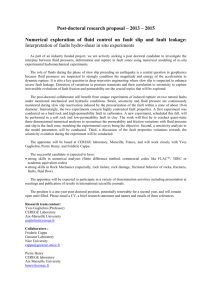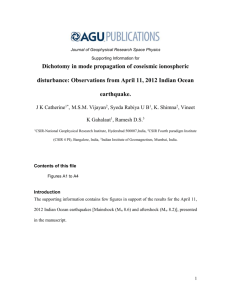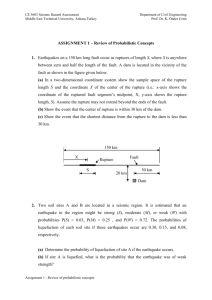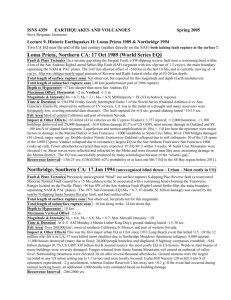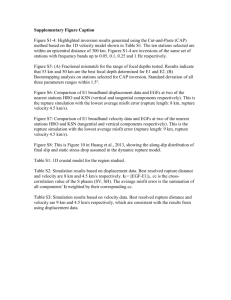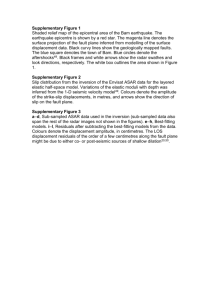Comparative review of key licence terms and conditions in the
advertisement
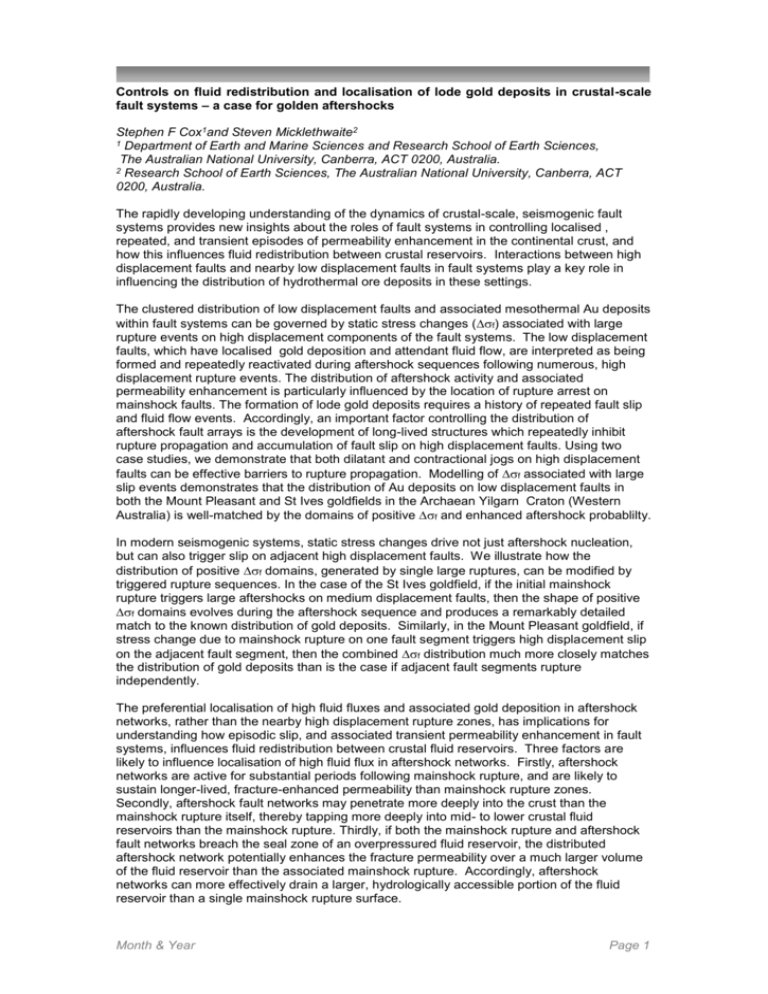
Controls on fluid redistribution and localisation of lode gold deposits in crustal-scale fault systems – a case for golden aftershocks Stephen F Cox1and Steven Micklethwaite2 1 Department of Earth and Marine Sciences and Research School of Earth Sciences, The Australian National University, Canberra, ACT 0200, Australia. 2 Research School of Earth Sciences, The Australian National University, Canberra, ACT 0200, Australia. The rapidly developing understanding of the dynamics of crustal-scale, seismogenic fault systems provides new insights about the roles of fault systems in controlling localised , repeated, and transient episodes of permeability enhancement in the continental crust, and how this influences fluid redistribution between crustal reservoirs. Interactions between high displacement faults and nearby low displacement faults in fault systems play a key role in influencing the distribution of hydrothermal ore deposits in these settings. The clustered distribution of low displacement faults and associated mesothermal Au deposits within fault systems can be governed by static stress changes (f) associated with large rupture events on high displacement components of the fault systems. The low displacement faults, which have localised gold deposition and attendant fluid flow, are interpreted as being formed and repeatedly reactivated during aftershock sequences following numerous, high displacement rupture events. The distribution of aftershock activity and associated permeability enhancement is particularly influenced by the location of rupture arrest on mainshock faults. The formation of lode gold deposits requires a history of repeated fault slip and fluid flow events. Accordingly, an important factor controlling the distribution of aftershock fault arrays is the development of long-lived structures which repeatedly inhibit rupture propagation and accumulation of fault slip on high displacement faults. Using two case studies, we demonstrate that both dilatant and contractional jogs on high displacement faults can be effective barriers to rupture propagation. Modelling of f associated with large slip events demonstrates that the distribution of Au deposits on low displacement faults in both the Mount Pleasant and St Ives goldfields in the Archaean Yilgarn Craton (Western Australia) is well-matched by the domains of positive f and enhanced aftershock probablilty. In modern seismogenic systems, static stress changes drive not just aftershock nucleation, but can also trigger slip on adjacent high displacement faults. We illustrate how the distribution of positive f domains, generated by single large ruptures, can be modified by triggered rupture sequences. In the case of the St Ives goldfield, if the initial mainshock rupture triggers large aftershocks on medium displacement faults, then the shape of positive f domains evolves during the aftershock sequence and produces a remarkably detailed match to the known distribution of gold deposits. Similarly, in the Mount Pleasant goldfield, if stress change due to mainshock rupture on one fault segment triggers high displacement slip on the adjacent fault segment, then the combined f distribution much more closely matches the distribution of gold deposits than is the case if adjacent fault segments rupture independently. The preferential localisation of high fluid fluxes and associated gold deposition in aftershock networks, rather than the nearby high displacement rupture zones, has implications for understanding how episodic slip, and associated transient permeability enhancement in fault systems, influences fluid redistribution between crustal fluid reservoirs. Three factors are likely to influence localisation of high fluid flux in aftershock networks. Firstly, aftershock networks are active for substantial periods following mainshock rupture, and are likely to sustain longer-lived, fracture-enhanced permeability than mainshock rupture zones. Secondly, aftershock fault networks may penetrate more deeply into the crust than the mainshock rupture itself, thereby tapping more deeply into mid- to lower crustal fluid reservoirs than the mainshock rupture. Thirdly, if both the mainshock rupture and aftershock fault networks breach the seal zone of an overpressured fluid reservoir, the distributed aftershock network potentially enhances the fracture permeability over a much larger volume of the fluid reservoir than the associated mainshock rupture. Accordingly, aftershock networks can more effectively drain a larger, hydrologically accessible portion of the fluid reservoir than a single mainshock rupture surface. Month & Year Page 1 Month & Year Page 2

